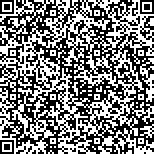| 引用本文: | 周妮娜,张利英,刘永琦,何建新,张亚楠,胡文涛,卢志伟,武有明,高卓越.黄芪多糖对电离辐射诱发间充质干细胞基因DNA损伤的保护作用[J].中国现代应用药学,2016,33(2):139-143. |
| ZHOU Nina,ZHANG Liying,LIU Yongqi,HE Jianxin,ZHANG Yanan,HU Wentao,LU Zhiwei,WU Youming,GAO Zhuoyue.Radioprotection of Astragalus Polysaccharide Against Genomic DNA Damage of Mesenchymal Stem Cell Induced by Ionizing Radiation[J].Chin J Mod Appl Pharm(中国现代应用药学),2016,33(2):139-143. |
|
| |
|
|
| 本文已被:浏览 2848次 下载 2678次 |

码上扫一扫! |
|
|
| 黄芪多糖对电离辐射诱发间充质干细胞基因DNA损伤的保护作用 |
|
周妮娜1, 张利英1, 刘永琦1,2, 何建新1, 张亚楠3, 胡文涛3, 卢志伟1, 武有明1, 高卓越1
|
|
1.甘肃中医药大学,甘肃省高校重大疾病分子医学与中医药防治研究省级重点实验室,兰州 730000;2.敦煌医学与转化省部共建教育部重点实验室,兰州 730000;3.甘肃省空间辐射生物学重点实验室,中国科学院近代物理研究所,兰州 730000
|
|
| 摘要: |
| 目的 研究黄芪多糖(Astragalus polysaccharide,APS)对X射线辐照人骨髓间充质干细胞(human bone mesenchymal stem cells,HMSC-bm)增殖水平影响及其诱发DNA损伤的保护作用。方法 采用CCK-8法筛选APS作用于HMSC-bm细胞的最佳有效浓度;照射组采用2.0 Gy剂量X射线辐照干预HMSC-bm,加药组用最佳药物浓度干预受辐照HMSC-bm:CCK-8法检测各组细胞的增殖能力;胞质分裂阻滞微核技术(CB微核法)检测X射线照射HMSC-bm后的微核率;免疫荧光检测53BP1免疫荧光簇集焦点。结果 APS浓度为50 μg·mL-1时促增殖作用最高,设为最佳药物浓度,与对照组(0 μg·mL-1 APS)相比,其促增殖作用具有统计学差异(P<0.05);与对照组比较,X射线照射后细胞增殖水平明显降低(P<0.05)。与单纯照射组比较,加药照射组HMSC-bm细胞增殖水平显著增加(P<0.05),其增殖水平接近对照组细胞增殖水平;单纯照射组0.5,2 h细胞内53BP1免疫荧光焦点显著增多(P<0.05),而给药显著降低了辐射诱导的53BP1焦点水平(P<0.05);照射后细胞微核率明显升高(P<0.05),给药则导致细胞微核率显著降低(P<0.05)。结论 APS对X射线辐射诱发人骨髓间充质干细胞基因组DNA损伤有防护作用。 |
| 关键词: 电离辐射 骨髓间充质干细胞 DNA损伤 微核 黄芪多糖 |
| DOI: |
| 分类号: |
| 基金项目:国家自然科学基金项目(81473457) |
|
| Radioprotection of Astragalus Polysaccharide Against Genomic DNA Damage of Mesenchymal Stem Cell Induced by Ionizing Radiation |
|
ZHOU Nina1, ZHANG Liying1, LIU Yongqi1,2, HE Jianxin1, ZHANG Yanan3, HU Wentao3, LU Zhiwei1, WU Youming1, GAO Zhuoyue1
|
|
1.Provincial-Level Key Laboratory for Molecμlar Medicine of Major Diseases and the Prevention and Treatment with Traditional Chinese Medicine Research in Gansu Colleges and Universities, Gansu University of Traditional Chinese Medicine, Lanzhou 730000, China;2.Key Laboratory of Dunhuang Medicine and Transformation at Provincial and Ministerial Level, Lanzhou 730000, China;3.Gansu Key Laboratory of Space Radiobiology, Institute of Modern Physics, Chinese Academy of Sciences, Lanzhou 730000, China
|
| Abstract: |
| OBJECTIVE To study the effect of Astragalus polysaccharide(APS) on the proliferation level and the protective effect on DNA damage of human bone marrow mesenchymal stem cells which is induced by the X-ray irradiation. METHODS CCK-8 assay was used for screening of the optimal concentration of APS on HMSC-bm cells; the irradiation group was treated with 2.0 Gy doses of X radiation, while the medicated group was administrated with the optimal concentration of drug; cytokinesis-block micronucleus assay (CB micronucleus assay) was used to detect the micronucleus rate after X-ray irradiation; immunofluorescence test was used to detect the clustered 53BP1 foci. RESULTS APS of 50 μg·mL-1 had the strongest stimulating effect on proliferation, which was used as the optimal drug concentration. Compared with the control group(0 μg·mL-1 APS), the medicated group showed a significantly higher proliferation rate (P<0.05). After irradiation, the level of cell proliferation was significantly decreased (P<0.05). Compared with irradiation group, the irradiation plus drug group showed increased cell proliferation level(P<0.05), which was close to that of the control group. 53BP1 foci level increased signicicantly 0.5 and 2 h post irradiation (P<0.05), while 50 μg·mL-1 APS reduced the 53BP1 level induced by irradiation. Compared with the control group, cell micronucleus rate increased(P<0.05) after X-ray irradiation, while it was reduced upon 50 μg·mL-1 APS treatment(P<0.05). CONCLUSION APS has protective effect on X-ray radiation induced cell genomic DNA damage. |
| Key words: ionizing radiation bone marrow mesenchymal stem cells DNA damage micronucleus Astragalus polysaccharide |
|
|
|
|
